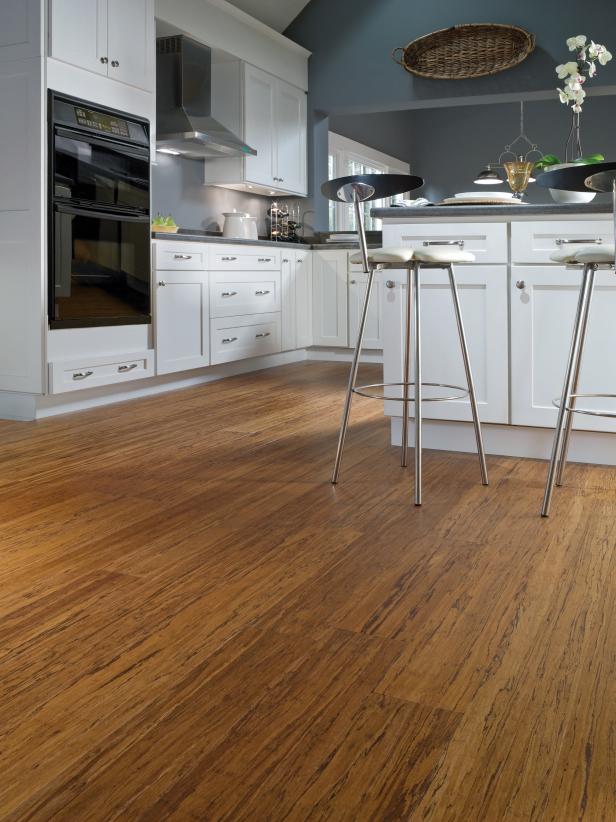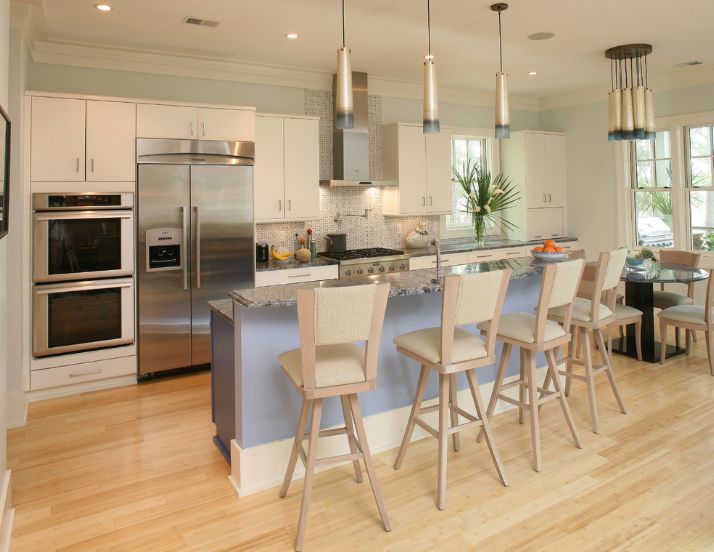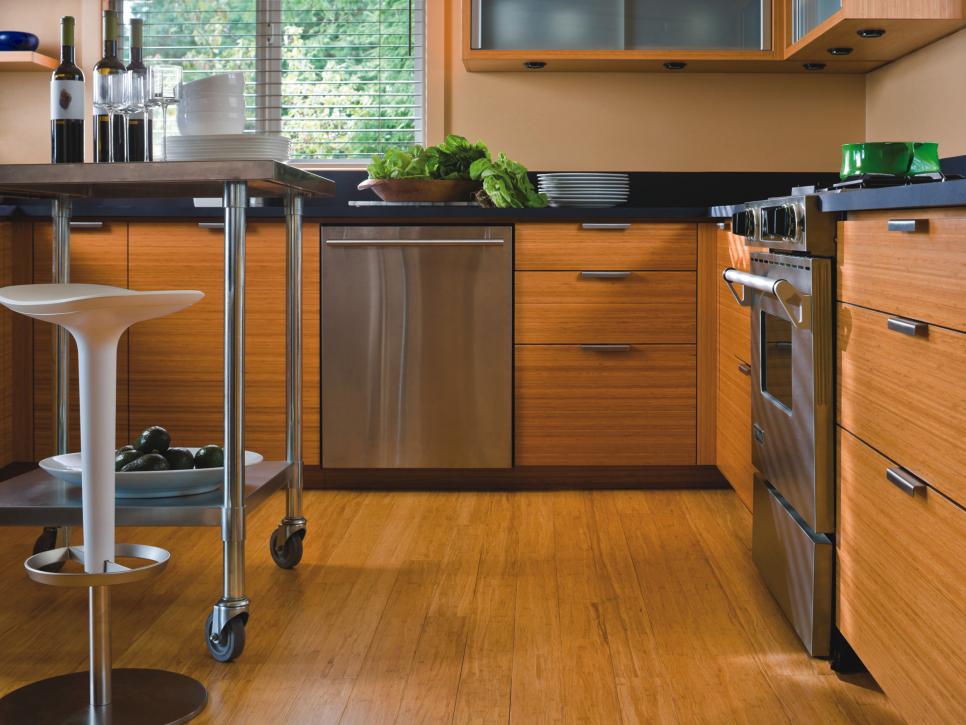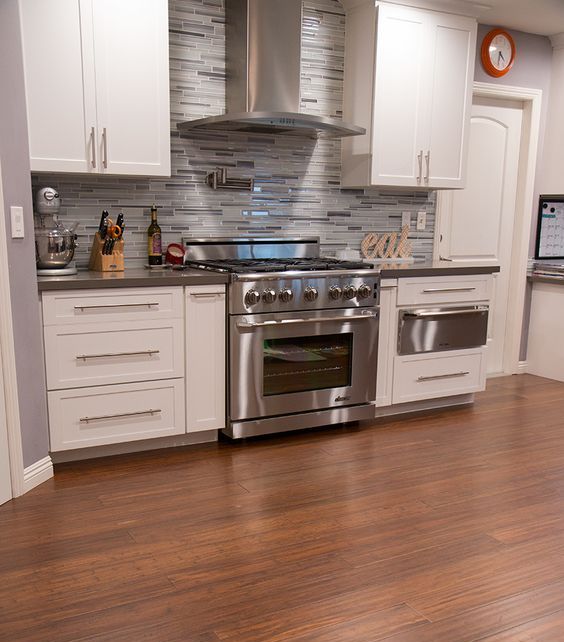Bamboo Flooring in Kitchens
Bamboo flooring has become an increasingly popular option for kitchens, offering a unique blend of durability, sustainability, and aesthetic appeal. As homeowners seek eco-friendly alternatives to traditional hardwood, bamboo stands out for its rapid renewability and distinctive look. Kitchen floors face unique challenges—from moisture and spills to heavy foot traffic—making the choice of material particularly important.Below are several key aspects of using bamboo flooring in kitchens, providing practical insights to help you determine if it’s the right fit for your home.
Benefits of Bamboo Flooring in Kitchens
-
Eco-Friendly Material: Bamboo is technically a grass that reaches maturity in just 3-5 years, making it one of the most sustainable flooring options available. It regenerates without needing replanting, unlike traditional hardwoods that take decades to mature.
-
Durability Underfoot: High-quality strand-woven bamboo rivals traditional hardwoods in hardness ratings. This dense construction resists dents and scratches better than standard bamboo or even some oak varieties, standing up well to kitchen activities.
-
Natural Moisture Resistance: While not waterproof, bamboo handles moisture better than many hardwoods. Its tight grain structure and manufacturing process create a floor less prone to warping from occasional spills when properly sealed.
-
Warm, Inviting Aesthetic: Bamboo brings natural warmth to kitchens with its distinctive grain patterns. Available in various stains from light blondes to rich caramels, it complements both modern and traditional kitchen designs.
-
Easy Maintenance: Bamboo floors require simple care—regular sweeping and occasional damp mopping with a pH-neutral cleaner. Unlike tile grout, they don’t trap food particles or require special cleaning solutions.

Important Considerations Before Installation
Before committing to bamboo in your kitchen, several practical factors deserve attention.
Moisture protection should be your top priority. Even with bamboo’s natural resistance, kitchens need extra precautions. Choose a high-quality polyurethane finish and consider adding waterproof underlayment, especially in homes with active cooks or young children.
Understand the different types of bamboo flooring. Horizontal and vertical grain bamboo show more distinctive “knuckle” patterns but are softer than strand-woven varieties. For kitchens, strand-woven offers superior durability against dropped utensils and chair legs.
Consider your kitchen’s traffic patterns. While bamboo holds up well, the area in front of sinks and stoves might benefit from strategically placed rugs to protect against prolonged water exposure and hot oil splatters.
Climate matters more than many realize. Bamboo expands and contracts with humidity changes more noticeably than some hardwoods. Homes in very humid or extremely dry climates should acclimate the flooring properly before installation.
Budget realistically. While bamboo often costs less than premium hardwoods, quality strand-woven varieties with robust finishes approach mid-range hardwood prices. Factor in professional installation for best results in moisture-prone kitchens.
Design Possibilities with Bamboo
Bamboo flooring offers surprising versatility in kitchen design schemes.
For contemporary kitchens, light-toned carbonized bamboo creates an airy, Scandinavian feel. Pair with white cabinetry and stainless steel appliances for a clean, modern aesthetic that still feels warm underfoot.
Traditional kitchens gain character from bamboo’s natural variations. Medium-toned horizontal grain bamboo complements Shaker-style cabinets beautifully, while its distinctive nodes add visual interest without overwhelming the space.
Dark-stained strand-woven bamboo makes a dramatic statement in large kitchens. When used with minimalist cabinetry, it creates striking contrast and hides minor scratches better than lighter options.
Bamboo works exceptionally well in open-concept homes. Continuing the same flooring from kitchen to living areas creates seamless flow. The material’s natural sound-dampening qualities also help reduce noise transfer.
For unique accents, consider bamboo plank borders or medallions. These decorative elements can define the kitchen space while showcasing bamboo’s beautiful grain patterns in creative ways.
Maintenance and Long-Term Care
Proper care ensures your bamboo kitchen floor stays beautiful for years.
Establish a no-shoes policy to minimize dirt and grit that can scratch the surface. Place felt pads under all furniture legs, especially chairs that get frequent movement around kitchen tables.
Clean spills immediately. While bamboo handles moisture better than traditional hardwood, prolonged exposure to liquids can cause damage. Keep a dry towel handy near prep areas and sinks.
Use protective mats in high-risk zones. A quality rug pad under sink-side mats prevents moisture trapping while protecting against water damage from drips and splashes.
Refinish when needed. High-traffic kitchens may require recoating every 5-7 years. Strand-woven bamboo can often be sanded and refinished 2-3 times over its lifespan, depending on original plank thickness.
Monitor humidity levels. Maintaining 40-60% relative humidity helps prevent excessive expansion or contraction. Consider a whole-home humidifier in dry climates or a dehumidifier in damp basements with kitchen spaces.
Making the Final Decision
Bamboo flooring brings an exceptional combination of sustainability, durability, and beauty to kitchens. While it requires some special considerations—particularly regarding moisture protection—its benefits often outweigh these precautions for environmentally conscious homeowners.
The key lies in selecting the right type of bamboo, ensuring proper installation, and committing to simple but consistent maintenance. When these elements come together, bamboo creates a kitchen floor that’s not just eco-friendly, but also practical and visually striking.
As you weigh your options, consider how bamboo’s unique characteristics align with your cooking habits, design preferences, and long-term home goals. With proper care, a bamboo kitchen floor can provide decades of sustainable service while keeping your space looking fresh and inviting.
Reasons Portlanders Choose Bamboo Flooring
A Closer Look at Bamboo Flooring: The Pros u0026 Cons Bamboo
Bamboo Flooring Ideas With Pros And Cons
Bamboo Floors
Related Posts:






